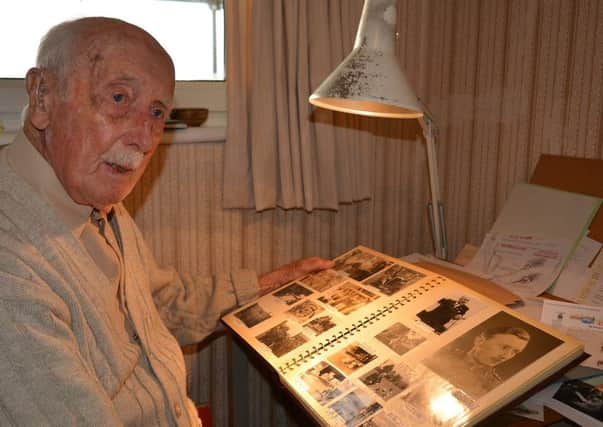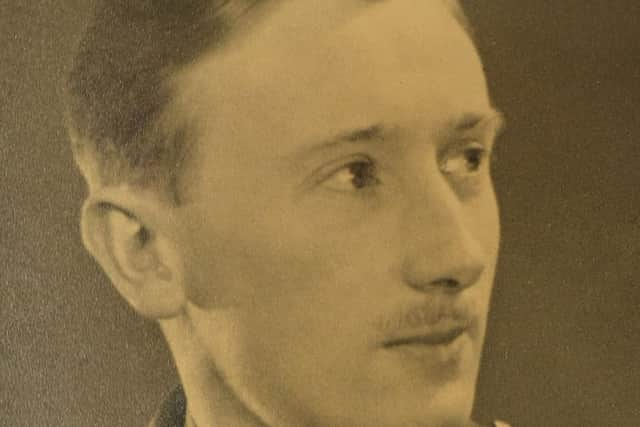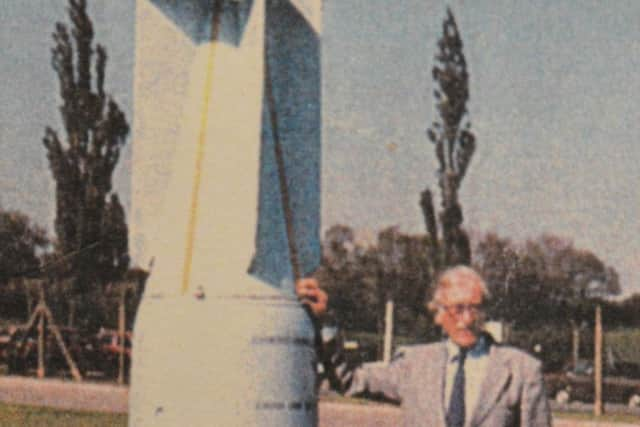Bomb disposal hero is ‘last man standing’
This article contains affiliate links. We may earn a small commission on items purchased through this article, but that does not affect our editorial judgement.


He writes: Of around 300 officers who led Britain’s war-time bomb disposal units half were killed. Today, at nearly 99, John Hannaford is, in his own words, “the only man left standing.”
That is why the Royal Engineers Bomb Disposal Officers’ Club were so anxious for the retired architect, of West Parade, to take part, on Thursday October 22, in “BD 75” – the 75th anniversary of the founding of the first RE bomb disposal companies.
Advertisement
Hide AdAdvertisement
Hide AdThe Highlight of the commemoration was a service in St Paul’s Cathedral.


Sadly, because of his beloved wife Joyce’s ill health and his own advanced years John could not take part. Instead he was represented by his daughter and granddaughter.
But he hopes that the words that he would have used at the service will be read at St Paul’s for he feels strongly about the subject.
He says: “The sight of RAF pilots flying high and winning the Battle of Britain is quite rightly etched in our memories. But despite their heroics, bombs continued to fall and many failed to explode.
Advertisement
Hide AdAdvertisement
Hide Ad“Some 50,000 unexploded bombs were excavated, de-fused and made safe by men of the Royal Engineers. Sadly, this vital part of the war effort seems mostly to have been written out of history.


“It is, of course, by no means the only forgotten war service or, indeed, individual deeds. War is grim and often lethal.
“So let us today remember all those who served in World War II Royal Engineers Bomb Disposal Companies, especially those who lost their lives in serving their country.”
John has a curious affinity with bombs. When he was a tiny child he and his mother narrowly missed death when a First World War raider hit London’s Embankment. He worked as an architect in 1938 on the design of Britain’s largest Royal Ordnance Factory at Chorley. Post-war, he worked on the design of Aldermaston nuclear airbase.
So, did he volunteer for bomb disposal work?
“Did I b…..hell! I’m not daft,” he says
Advertisement
Hide AdAdvertisement
Hide AdHe ended the war as Captain but started as a conscript Sapper. After Officer Training Unit one colleague was posted as a water engineer in the West Indies; another as a road engineer in South Africa.
John was posted to a bomb disposal unit in Cardiff…
He learned that, based on experience in the Spanish Civil War, a brilliant German scientist who realised that an unexploded bomb could cause great disruption had devised a series of anti-handling and delayed-action fuses.
When Luftwaffe chief Herman Goering initially showed no interest the engineer offered his designs to Britain’s War Office – where the drawings languished forgotten until after the war.
Meanwhile, John and his colleagues were risking their lives trying to outwit 17 different German fuses. At 22 he was in charge of 30 men. But once his sappers had uncovered a bomb they would withdraw and John would be on his own.
Advertisement
Hide AdAdvertisement
Hide AdThe only “good” news British trainees were given was that if things went wrong death would be so swift they would feel nothing…
How many devices did John de-fuse. “Hundreds. I once did seven in one morning.”
“Bomb Disposal” was a war-time misnomer. The work covered a multitude of unexploded devices including munitions used by UK troops during training.
The “enemy” could include the Luftwaffe’s 1,000kg “Herman,” its 1,800kg “Satan” and its 3,200kg “Max.”
What was his narrowest brush with death?
Advertisement
Hide AdAdvertisement
Hide AdJohn displays a close-up photo of a German delayed-action fuse. The timer could be set for anything up to 72 hours. He had just safely removed one and was carrying it as he climbed the ladder out of the excavated hole when a jet of flame shot across his face as the timer reached zero.
Moments earlier and he would not be recalling his remarkable life today.
Pointing to a reunion photograph taken in 1988, John says: “I’m the only man left standing now. I’ve had a wonderful life and I have a wonderful wife. I’m just a lucky man…”
Don’t miss out on all the latest breaking news where you live.
Advertisement
Hide AdAdvertisement
Hide AdHere are four ways you can be sure you’ll be amongst the first to know what’s going on.
1 Make our website your homepage at www.bexhillobserver.net
2 Like our Facebook page at www.facebook.com/bexhillobserver
3 Follow us on Twitter @BexhillObs
4 Register with us by clicking on ‘sign in’ (top right corner). You can then receive our daily newsletter AND add your point of view to stories that you read here.
And do share with your family and friends - so they don’t miss out!
The Bexhill Observer – always the first with your local news.
Be part of it.